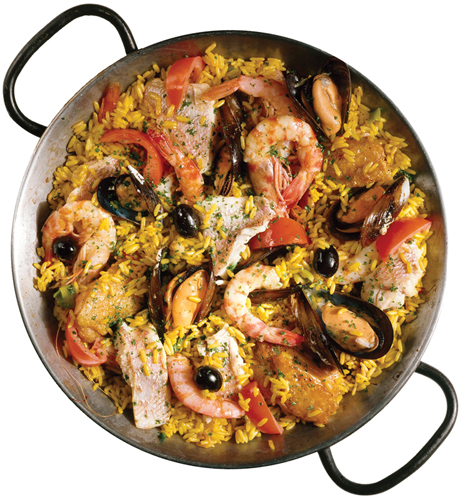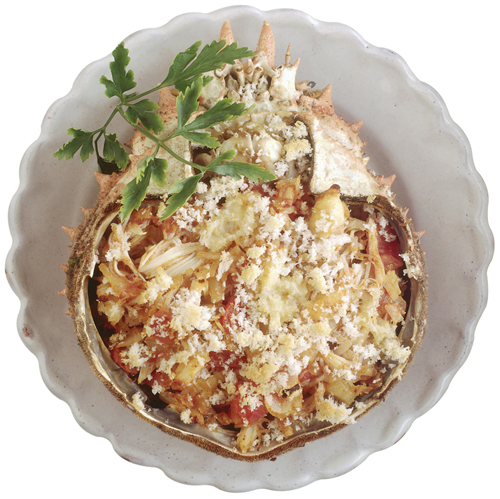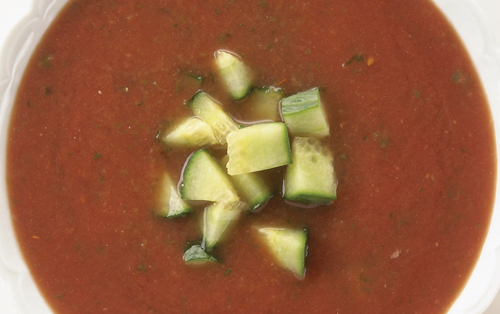Cocido Madrileño This classic Madrid stew goes back to the days when the working class housewives of Lavapiés and La Latina would keep a cooking pot simmering on the stove, adding whatever ingredients came to hand. Today’s typical cocido
might include pigs’ trotters, beef shank, chicken, sausage, chickpeas
and vegetables. Served in stages, first the broth, then the vegetables
and meats, it can be a meal in itself. For an up-market version, try La Bola. Cochinillo Asado The
Castilian countryside is famous for its roasts. To be authentic,
suckling pig should be cooked slowly in a wood fired oven until the
flesh is tender and the skin golden. Lamb (cordero) and game such as partridge (perdiz) and pheasant (faisán) are equally delicious when roasted in the traditional way. Callos a la Madrileña Tripe may not be to everyone’s taste, but try it “Madrid-style” in a typical taberna and you may change your mind. The ingredients of this tasty stew include chorizo (Spanish sausage), tomatoes, onions and paprika. Bacalao It
is said that there are as many ways of cooking this Mediterranean
staple of salted cod as there are days in the year. The American writer
Ernest Hemingway relished bacalao al ajoarriero, a cod stew made with tomatoes, peppers and garlic. Paella Sunny
Valencia is the acknowledged home of this most famous Spanish rice
dish. While traditionally cooked with fish and shellfish, you’ll also
find meat based paellas (usually rabbit or chicken). The name comes from the two-handled, shallow iron pan in which it is cooked and served.

Paella
Pulpo Gallego Octopus
“Galician style” originated in a part of the country famous for its
fish and seafood dishes. Usually served on a wooden platter, it comes in
slices on a layer of potato, with a large dose of oil and a sprinkling
of paprika. Pulpo gallego is extremely popular in Madrid. Fabada Asturiana Asturian
farmers swear by this nourishing bean soup as the best way of keeping
out the cold. Served piping hot, the other main ingredient is morcilla (black pudding). Ideally, wash it down with a glass of Asturian cider. Txangurro Spider
crab is a Basque delicacy which, purists say, should be served on its
own. It is so strongly flavoured that some chefs mix the meat with other
seafood before seasoning with parsley and garlic, and returning it to
the shell to serve.

Txangurro
Merluza Rebozada Another
north country favourite is hake fried in breadcrumbs. This versatile
fish is equally tasty cooked in a béchamel (white) sauce made with spicy
piquillo peppers, then stuffed into red peppers. Gazpacho The famous cold soup hails from Andalucia. Gazpacho’s main ingredients are tomatoes, garlic, cucumber and vinegar, with puréed bread for body.

Gazpacho
Top 10 Spanish Wines
Rioja Spain’s classiest wines hail from the upper Ebro valley (La Rioja) and have a distinctive, oaky flavour. Rueda This small, up-and-coming region south of Valladolid produces lively white wines using the Verdejo grape. Rias Baixas The Albariño grape thrives in cool, wet northwest Spain, known for its fragrant whites – but they don’t come cheap. Navarra Navarra’s palatable reds and rosés do not lag far behind those of neighbouring La Rioja, and prices are competitive. Penedès The
Catalonian region has never looked back since Miguel Torres introduced
Cabernet Sauvignon and Chardonnay grapes in the 1960s. Jerez The Andalusian plains just north of Cadiz have been synonymous with sherry production since the 18th century. Ribera del Duero This region is noted for its high quality red wines, made with the Tempranillo grape. Valdepeñas Valdepeñas turns out lightly-flavoured reds with a high alcohol content. La Mancha Spain’s largest wine growing region produces good-value table wines. Cava A fresh, sparkling wine; the name Cava (cellar) was adopted after the French disallowed use of the word champagne.
|